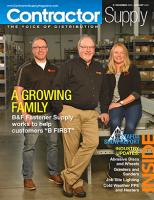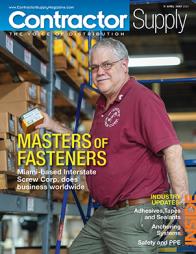Minneapolis Airport Unveils Expansion Plans
Seven-year, $2.4 billion plan would move non-Delta airlines to Humphrey Terminal.
By 2020, the Minneapolis-St. Paul International Airport could have 28 new gates, a new hotel, and an expanded parking lot — that is, if Delta makes good on its promise to expand its presence at the hub it purchased as part of its 2008 merger with Northwest Airlines.
In April, the Metropolitan Airports Commission will vote to send for review by the Metropolitan Council a new, “corrected” long-range plan that calls for $2.4 billion in expansion at the Minneapolis-St. Paul International Airport (MSP).
The major assumption behind the 20-year planning guide is that Atlanta-based Delta Air Lines will not only maintain the hub it acquired here when it subsumed Northwest Airlines, but also will expand its presence at the compact, 5.3-square-mile urban airport.
In fact, the spine of the MAC’s “long-term comprehensive plan” (LTCP), which is arranged in four five-year phases (2010-2015, 2015-2020, etc.), calls for moving all gates for non-Delta airlines into an expanded Humphrey Terminal, thereby clearing out (and later expanding) the Lindbergh Terminal to accommodate Delta and its “Sky Team” airlines.
In all, during the next 20 years, the LTCP would add 26 new gates at Humphrey and two at Lindbergh. (Today, Lindbergh has 117 gates and Humphrey 10.)
The expansion will be paid for through “airport revenue bonds” backed by passenger facility charges, parking revenues, gate and retail leases, concessions, landing fees and other sources, as well as federal money in the form of dollars from the “airport improvement program,” said Dennis Probst, MAC’s deputy executive director for planning and environment.
So far, Delta has provided the airports commission (MAC) no assurance that it will maintain a hub here — a reality that MAC officials acknowledge.
“It’s absolutely not a sure thing,” said Probst.
Probst described the LTCP as the MAC’s “best judgment” for where Delta and MSP (and the airline industry in general) are headed: “All the indications that we get from Delta are that they will maintain a hub here.”
He then added: “We are not going to go build this stuff and hope someone shows up — it will be demand-driven.”
And, in any case, Probst said, the LTCP is only a guide to planning — its details are not set in stone.
None of that is good enough for Jim Spensley, a longtime MAC analyst and critic.
A retired engineer and head of the South Metro Airport Action Council (SMAAC), Spensley, 71, believes the MAC is taking too big a gamble in assuming Delta will play along.
“There’s no assurance this will work,” Spensley said. “There used to be more assurance … there used to be an offset [provided] by the [Northwest] headquarters being here — and the crews and maintenance shed.
“But now they have neither the offset nor the assurance that [the MAC] will have the money to pay back the bonds,” Spensley said. “MAC is really betting that Delta will stay and expand here — and need the gates.
“That’s kind of the economic picture that bothers us.”
Scaled-down plans
Of course, the expansion plan the MAC is offering now is a scaled-down version: Their original long-term plan that encompassed the years 2010-2030 called for construction of an entire new terminal off Highway 62 on the west side of the airport.
But deep and significant changes in the airline industry — precipitated by the Sept. 11, 2001, terrorist attacks — made it necessary for the MAC to “correct” and scale down that plan, and the document now under consideration is the result.
In short, the current plan looks like this:
Phase I: This calls for construction of 16 new gates at Humphrey and is expected to cost $400 million-plus.
Phase II: This would see a modernization and expansion at Lindbergh, including a new “arrivals facility,” together slated to hit more than $900 million.
Phase III: This would complete the Humphrey expansion with an additional 10 new gates, expand Lindbergh’s G Concourse and include a new parking facility and a hotel — at a total cost of about $735 million.
Phase IV: This would include construction of “cross-over taxiways” and major access road improvements, especially along Highway 5, all expected to cost as much as $225 million.
Spensley and SMAAC argue that if there is to be expansion at MSP, it should happen at Lindbergh first, and then move on to Humphrey — if the demand is there.
“Suppose they [the MAC] spend $400 million to make more gates at Humphrey, and Delta never brings any more flights here?” Spensley asked.
Probst says things will change based on demand and use and what Delta does.
“But from a standpoint of cost, it is our judgment now that it’ll be less expensive to do expansion at Humphrey first and then continue to expand the G Concourse at Lindbergh,” Probst said.
He added that one reason the planning proceeds that way is expansion at the G Concourse could require the MAC to build a “people mover” train to get people out to the new “G” gates, especially from new parking near Humphrey (soon to be Terminal 2).
And that would be very expensive, so it’s pushed to later in the LTCP.
Next Wednesday, April 7, the finance, development and environment committee of the MAC will vote to send the plan along to the full commission. Then, on April 19, the MAC is expected to vote to send the LTCP along to the Metropolitan Council for review, Probst said.
The Met Council’s review process should be complete by the end of June. The full MAC board will then vote to approve the plan sometime in August, according to Probst. The Federal Aviation Administration will study and most likely amend a few smaller parts of the plan.
“We’re trying to reflect as accurately as we can the current situation,” Probst said. “At the moment we are not aware of anything that will create radical changes in the LTCP.”
The bottom line is that Phase I construction should begin next year and be completed by 2015 — in time for Phase II to start.
“I’m optimistic that we can start Phase I next year and finish it by 2015,” Probst added. “[Finishing Phase I] may slide a year into 2016, but I don’t see it sliding two years into 2017.”
Source: www.finance-commerce.com, by Bill Clements Staff Writer















